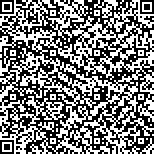下载中心
优秀审稿专家
优秀论文
相关链接
摘要

提出了一种新的基于信息熵的空间尺度选择方法。该方法充分利用了遥感影像的多光谱信息。在这个方法中, 信息熵被用于评价影像类别可分性的定量标准; 另外影像的空间分布特征也被考虑。该方法与已有方法, 即基于局部方差的方法、基于变异函数(Variogram)的方法、基于离散度的方法, 进行了比较。TM和QuickBird两种影像被引入到评价中来。实验结果表明, 本方法能够准确地确定两种实验影像的最优分类精度所对应的空间尺度。QuickBird影像采用了面向对象的分类方法进行实验, 这表明本方法不仅适合于传统的分类方法, 同时也适用于面向对象的方法。通过比较分析表明, 本文方法明确优于已有各种方法。
The effect of scale is continuously attracting attentions in geomatics, bionomics and environmentology. Many methods have been developed for the selection of optimal scale, including those based on local variance, variogram and transformed divergence. However, there are some problems associated with these methods, which limit their applications in practice. This paper presents a new method for optimal scale selection, based on information entropy. The novelty of this new method is that the multi-spectral information is fully used to define the optimal scale. In this method, (a) information entropy is introduced to quantify the uncertainty in image classification; (b) the spatial distribution is also taken into account. This new method has been evaluated and also compared with the existing methods, i.e., those based on local variance, variogram and transformed diver-gence. Two types of image are used, i.e. TM (Thematic Mapper) which has relatively low resolution and Quickbird image which has high resolution. The experimental results show that the proposed algorithm is capable of effectively determining the optimal scale for these images. In the case of classification of Quickbird image, objected-oriented classification technology is used and the results prove that the new method not only works well with traditional classifiers but also performs with object-oriented classifiers for high resolution images. A comparative analysis shows that the new method performs much better than existing methods.

